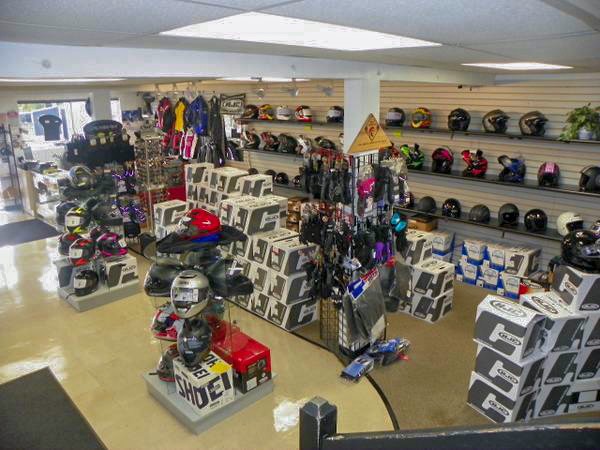Find Competitive Costs on Motocross Parts NZ for every single Bike
Find Competitive Costs on Motocross Parts NZ for every single Bike
Blog Article
Understanding Bike Gears: How to Optimize Your Riding Experience
In the realm of motorcycling, grasping the art of equipment adjustment is crucial for enhancing your riding performance. Appropriately recognizing and using motorcycle gears can significantly influence acceleration, fuel, and control efficiency, changing an ordinary ride right into a smooth, exciting trip. By including exact change timing and adjusting equipment choice to numerous road problems, bikers can ensure ideal engine efficiency and security. The nuances of clutch control, throttle sychronisation, and gear mechanics bid a much deeper expedition, guaranteeing to unlock the complete possibility of your machine. How can these methods be taken advantage of to genuinely enhance your riding experience?
Recognizing Gear Mechanics
How do the details of equipment auto mechanics affect motorcycle performance? At the core of bike dynamics, gear technicians play a critical duty in transforming engine power into movement, eventually determining rate and control. Gears, thoroughly crafted components, allow riders to optimize torque and speed, guaranteeing a smooth change via various terrains and velocities. The gear ratios, carefully developed, determine the relationship between engine revolutions and wheel turns, affecting acceleration and gas effectiveness.
Comprehending equipment auto mechanics begins with recognizing the value of the transmission, which houses multiple gears of differing dimensions. These gears connect via a process called meshing, where teeth of various gears involve to transfer power. The precision of this interaction is crucial; any imbalance or damage can cause inefficient power transfer, hindering performance. Furthermore, the plan and size of gears affect the motorcycle's capability to take care of different lots and rates.
Additionally, the concept of equipment changing is important to making the most of performance. Smooth and timely shifts ensure that the engine runs within its optimum power band, preventing unnecessary stress and boosting longevity (moto parts nz). By understanding these mechanical complexities, motorcyclists can achieve an unified blend of effectiveness, control, and power, elevating their riding experience
Timing Your Changes
Shift timing proficiency is crucial for maximizing bike performance and boosting the riding experience. Correctly timed changes ensure that the engine operates within its optimum power band, which is essential for keeping control, accomplishing smooth acceleration, and ensuring the longevity of the bike. Cyclists have to establish an intuitive feeling of when to move gears, which includes comprehending the relationship in between engine changes per minute (RPM) and rate.
To master shift timing, pay very close attention to the engine's sound and feel, as these give vital clues about when to change gears. When the engine comes close to the top range of its power band without getting to the redline, the suitable shift point generally takes place - mx gear nz. Moving prematurely can lead to a lack of power, while shifting too late might cause unnecessary engine stress
Additionally, roadway problems and riding design impact change timing. For circumstances, in metropolitan setups, smoother and a lot more constant shifts may be essential to browse web traffic effectively. In comparison, during freeway riding, less shifts at greater rates can be better. Exercising in diverse atmospheres will boost your capability to time shifts precisely, inevitably boosting your riding experience to a professional degree.
Enhancing Gas Performance
While understanding motorbike gears is crucial for performance, improving gas effectiveness is similarly important for both environmental and financial reasons. Ideal fuel intake not only decreases functional costs but likewise decreases the ecological footprint of riding. To accomplish this, one need to recognize the complex connection between equipment selection and engine efficiency.
Riding in a higher equipment at lower speeds can lead to engine carrying, which is damaging to both fuel economy and engine health. Conversely, riding in lower gears at high rates results in unnecessary gas intake.
Furthermore, routine maintenance plays a pivotal duty in fuel performance. Ensuring that the motorcycle is well-tuned, with tidy air filters and correctly inflated tires, can decrease and boost the rules of aerodynamics fuel wastage. Taking on a riding style that welcomes steady velocity and smooth deceleration can contribute to better fuel economic situation.

Methods for Smooth Transitions
Achieving smooth gear shifts is fundamental to enhancing the riding experience and ensuring the durability of a bike's transmission system. Appropriate equipment moving not just adds to a seamless adventure but additionally minimizes damage on the mechanical parts. To understand the art of smooth shifts, cyclists need to focus on a few vital techniques.

Secondly, clutch control plays a pivotal duty. Involving and disengaging the clutch efficiently requires method. The clutch lever need to be released gradually, enabling for a smooth transfer of power from the engine to the wheels without causing a jolt or abrupt motion.

Adapting to Road Problems
Navigating varied roadway problems is a crucial ability for any motorcyclist intending to keep control and safety and security. Whether you're riding on damp surface areas, crushed rock roads, or navigating doglegs, your capability to adjust your equipment use and riding method is paramount. Recognizing just how to readjust your equipments suitably can considerably influence traction and security, making certain a much safer trip.
On wet roadways, it is advisable to preserve greater gears to reduce torque and reduce wheel spin. This strategy helps maintain hold on unsafe surface areas, enabling click for info for smoother velocity and slowdown. In comparison, when riding on crushed rock or irregular terrain, reduced gears are more suitable. Lower equipments offer better control and enable you to respond more promptly to unexpected changes in the road surface area.
Sharp contours demand accurate gear management to balance speed and control. Downshifting before going into a curve can aid maintain momentum while making sure the bike continues to be secure throughout the turn. Constant method in different problems improves your ability to forecast and react to adjustments in road texture and incline.
Final Thought
Grasping motorbike gears significantly improves the riding experience by enhancing acceleration, control, and fuel effectiveness. Adjusting equipment choice to numerous roadway conditions, such as using greater equipments on damp surfaces and lower equipments on gravel, more enhances handling and security.
Recognizing gear technicians begins with recognizing the relevance of the transmission, which houses numerous equipments of differing dimensions. These gears connect via a procedure known as meshing, where teeth of different gears involve to transmit power (mx gear nz). Mild modifications to the throttle during equipment shifts can Learn More Here stop jerky movements and keep a regular riding rate
Whether you're riding on wet surfaces, crushed rock roads, or browsing sharp turns, your capacity to adapt your equipment use and riding strategy is paramount. Adapting equipment selection to various roadway conditions, such as making use of greater gears on wet surface areas and lower gears on gravel, more boosts handling and security.
Report this page